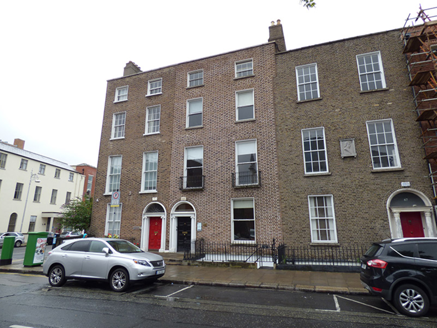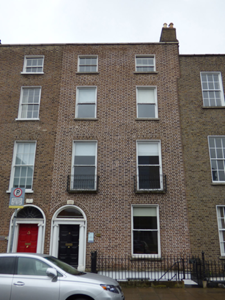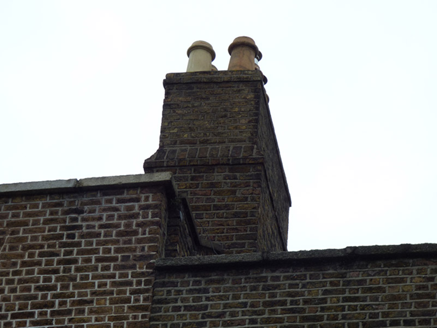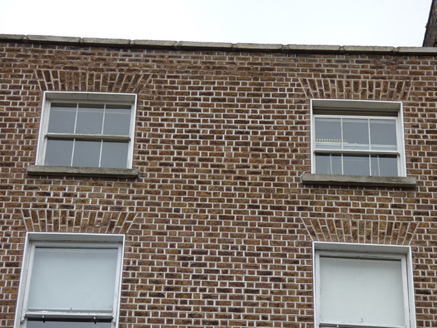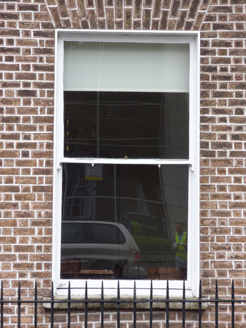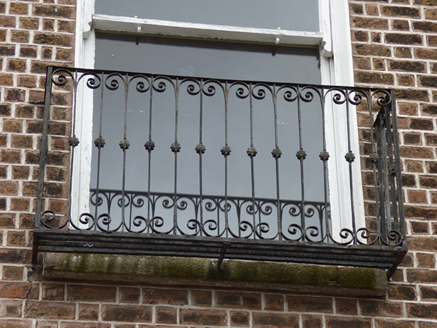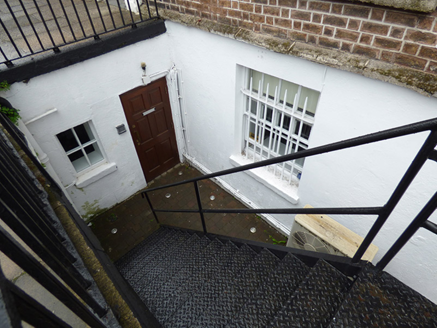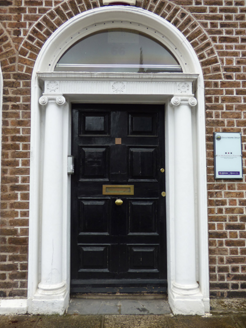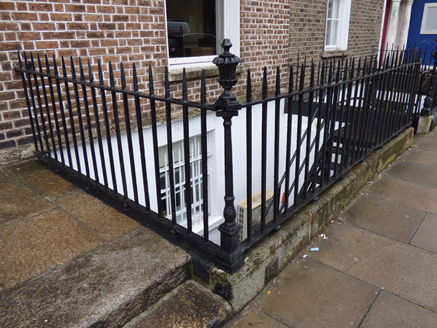Survey Data
Reg No
50100692
Rating
Regional
Categories of Special Interest
Architectural, Artistic
Original Use
House
In Use As
Office
Date
1820 - 1830
Coordinates
316891, 233050
Date Recorded
28/07/2016
Date Updated
--/--/--
Description
Attached two-bay four-storey former house over basement, built c. 1825 as one of pair (Nos. 65-66), with three and four-storey flat-roofed return to west end of rear. Now in use as offices. M-profile roof, hipped to west end, concealed by parapet with stone coping, and having gabled dormer to south slope of rear span. Shouldered brown brick chimneystacks to south party wall with clay pots. Flemish bond brown brick walling to upper floors on masonry plinth course over painted smooth rendered basement walling. Square-headed window openings, diminishing in height to upper floors, with painted rendered reveals and granite sills. Timber sliding sash windows, three-over-three pane to top floor with cavetto horns, eight-over-eight pane to basement with profiled horns and iron grille, and late nineteenth-century one-over-one pane timber sliding sash windows to other floors with ogee horns. Decorative cast-iron balconettes to first floor. Rear has timber sash windows, three-over-three pane to top floor, eight-over-eight pane below, and round-headed window to west bay. Round-headed doorway with moulded reveals, engaged Ionic columns, cornice and fluted frieze with rosettes, plain fanlight and eight-panel timber door with brass furniture. Shared granite entrance platform with two steps to street. Basement area enclosed by wrought-iron railings with decorative cast-iron posts on moulded granite plinth. Mild steel steps to basement; plainly detailed recent timber door and fixed window under entrance platform. carpark and remodelled two-storey mews building with flat-roofed extension to rear of plot.
Appraisal
An early nineteenth-century house, forming a pair with No. 65, characterized by well-balanced proportions, a good neo-Classical doorcase and street-front setting features. The facade is enhanced by its decorative balconettes. Although it has incurred some loss of historic fabric, its overall character is retained and the building contributes significantly to the architectural character of Baggot Street Lower and to the wider Georgian core of south Dublin. Planned in the late 1780s, development of the street began towards the west end, but progress was hampered by recession in the 1790s and the majority of buildings were constructed in the early nineteenth century, with some gaps remaining until the mid-1840s. The variations in levels, materials, doorcase treatment and detailing across the streetscape, highlight the speculative nature of its development.
